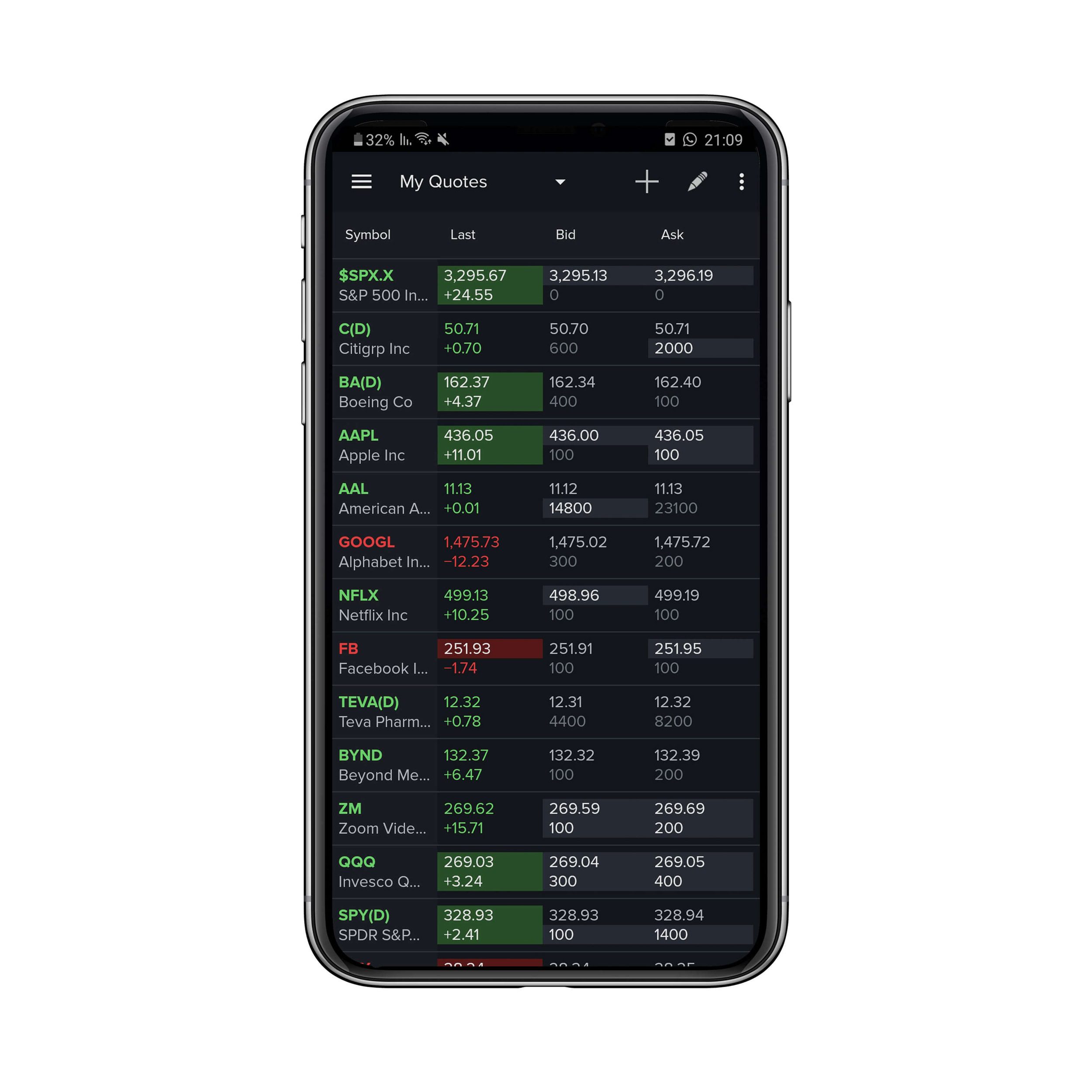

Finance
What Does Averaging Down Mean In Stocks
Published: January 18, 2024
Learn the meaning of averaging down in stocks and how it can impact your finances. Discover strategies to navigate this investment technique.
(Many of the links in this article redirect to a specific reviewed product. Your purchase of these products through affiliate links helps to generate commission for LiveWell, at no extra cost. Learn more)
Table of Contents
Introduction
Welcome to the world of investing! If you’ve recently delved into the stock market, you may have come across the term “averaging down.” But what exactly does it mean and how does it impact your investment strategy? In this article, we will explore the concept of averaging down and its implications for stock market investors.
Averaging down is a strategy that involves buying more shares of a stock at a lower price than the original purchase price. The goal is to reduce the average cost per share, which can potentially result in higher profits when the stock price eventually rises. However, this strategy comes with both benefits and risks that investors should carefully consider.
Before we dive deeper, let’s clarify one important point. Averaging down should not be confused with “doubling down.” While both involve buying more shares of a stock, doubling down refers to increasing the investment after the stock has taken a hit, often due to adverse news or market conditions. Averaging down, on the other hand, focuses on purchasing additional shares at different price levels over time.
Now that we understand the distinction, let’s explore the benefits of averaging down in stocks. By lowering the average cost per share, investors potentially increase their chances of generating higher returns when the stock price rebounds. This strategy can be particularly attractive during market downturns or when a stock is facing temporary setbacks.
Definition of Averaging Down
Averaging down is an investment strategy in which an investor purchases more shares of a stock at a lower price than the original purchase price. This strategy is implemented with the aim of reducing the average cost per share and potentially increasing profitability in the long run.
When an investor decides to average down, it means they believe that the current price of the stock is lower than its intrinsic value or that the market has undervalued the stock. By purchasing more shares at a lower price, the investor is essentially increasing their stake in the company, betting on the stock’s eventual recovery and potential for future gains.
To illustrate this concept, let’s consider an example. Suppose an investor purchases 100 shares of XYZ Company at $10 per share for a total investment of $1,000. However, after a few months, the stock price drops to $8 per share. Instead of panicking and selling the shares at a loss, the investor decides to average down. They purchase an additional 100 shares at $8 per share, bringing their average cost per share down to $9.
By averaging down, the investor now owns a total of 200 shares at an average cost of $9 per share, instead of just 100 shares at $10 per share. This strategy allows the investor to potentially benefit when the stock price eventually recovers and exceeds their average cost per share.
It’s important to note that averaging down should be used selectively and with caution. Not all stocks will bounce back or recover from their declines. Conducting thorough research, analyzing the company’s financial health, and understanding its growth prospects are crucial before implementing this strategy.
Benefits of Averaging Down
Averaging down, when done thoughtfully and strategically, can offer several potential benefits to investors. Let’s delve into some of the advantages associated with this investment strategy:
- Lowering the average cost per share: The primary benefit of averaging down is that it reduces the average cost per share of a stock. By purchasing more shares at a lower price, investors can bring down their average entry point. This can be advantageous as it reduces the price at which the stock needs to rise in order for the investor to break even or book a profit.
- Increasing potential for higher profits: Averaging down enhances the potential for higher profits when the stock eventually rebounds. If the investor’s analysis of the stock’s intrinsic value and growth prospects remains intact, a lower average cost per share can result in larger gains when the stock price rises in the future.
- Capitalizing on market opportunities: Averaging down can be a strategic way to take advantage of market opportunities. When a stock experiences a temporary decline due to market volatility, economic conditions, or other factors, investors may view it as an opportunity to buy more shares at a discounted price.
- Increasing ownership stake: By purchasing more shares through averaging down, investors increase their ownership stake in the company. This can be advantageous if the investor believes in the long-term potential of the company and wants to have a larger position in its growth.
- Building discipline and patience: Averaging down requires discipline and patience as it involves holding onto a stock during periods of market fluctuations. This strategy encourages investors to take a long-term view and ride out short-term price fluctuations in pursuit of potential gains over time.
It’s important to note that while averaging down can offer potential benefits, it is not a guaranteed path to profits. It is crucial for investors to conduct thorough research, assess the company’s fundamentals, and consider market conditions before implementing this strategy.
Risks of Averaging Down
While averaging down can have its advantages, it is essential for investors to be aware of the potential risks involved. Here are some of the risks associated with this investment strategy:
- Continued price decline: One of the biggest risks of averaging down is the possibility of the stock price continuing to decline. Buying more shares at a lower price can lead to significant losses if the stock does not recover as anticipated. It is important to carefully consider the reasons behind the stock’s decline and assess the likelihood of a turnaround before averaging down.
- Overexposure to a declining investment: Averaging down can result in overexposure to a particular stock. If the initial investment was substantial and the stock continues to decline, the investor’s portfolio might become heavily weighted towards a losing position. This can impact the overall diversification and increase the potential for losses.
- Opportunity cost: Averaging down ties up additional funds in a particular stock, limiting the investor’s ability to invest in other potentially profitable opportunities. This opportunity cost should be considered when deciding whether to average down or explore other investment options.
- Falling into a “value trap”: While a declining stock may appear undervalued, it’s essential to differentiate between a temporary setback and a fundamental issue with the company. Averaging down on a stock that is actually a value trap – a stock that appears cheap but lacks long-term growth potential – can lead to further losses and the inability to recoup the investment.
- Psychological stress: Averaging down requires patience and emotional resilience. Seeing the value of the investment decline can be emotionally challenging, potentially leading to poor decision-making and impulsive actions. It’s important for investors to be aware of their risk tolerance and ability to withstand potential losses before adopting this strategy.
It is crucial for investors to carefully evaluate the risks involved in averaging down and to conduct thorough research before implementing this strategy. A well-informed decision, based on comprehensive analysis and a clear understanding of the stock’s prospects, can help mitigate potential risks.
Factors to Consider When Averaging Down
When considering the option to average down on a stock, there are several important factors that investors should take into account. Here are key considerations to help make informed decisions:
- Fundamental analysis: Conduct a thorough analysis of the company’s fundamentals, including its financial health, earnings growth potential, competitive landscape, and overall industry trends. Understanding the company’s prospects is crucial in determining whether it is a sound investment and if averaging down is justified.
- Market conditions: Assess the current market conditions and the factors influencing the stock’s decline. Is the decline specific to the company or part of a broader market trend? Understanding the market dynamics can help determine the likelihood of a potential turnaround and inform the decision to average down.
- Long-term growth prospects: Evaluate the long-term growth prospects of the stock. Are there catalysts or upcoming events that could positively impact the company’s performance? Averaging down should be considered when there is confidence in the company’s ability to rebound and deliver long-term growth.
- Risk tolerance: Assess your risk tolerance level. Averaging down involves holding onto a declining stock and accepting the possibility of further losses in the short term. Determine whether you have the emotional resilience and financial capacity to withstand potential fluctuations and risks associated with this strategy.
- Diversification: Review your overall investment portfolio. Consider how averaging down on a particular stock influences diversification. Diversifying investments across different sectors and asset classes can help mitigate risks associated with individual stocks and industries.
- Investment timeframe: Consider your investment timeframe. Averaging down is generally a strategy for long-term investors who have confidence in the stock’s recovery over time. If you have a shorter investment horizon or specific financial goals, averaging down may not align with your objectives.
It’s important to note that these factors are not exhaustive, and investors should consider their individual circumstances, investment goals, and preferences when deciding whether to average down on a stock. Seeking advice from a qualified financial professional can also provide valuable guidance tailored to your specific situation.
Common Mistakes to Avoid When Averaging Down
Averaging down can be a useful strategy if implemented thoughtfully, but it is essential to avoid certain common pitfalls. Here are some mistakes to avoid when using the averaging down strategy:
- Ignoring the reasons behind the decline: It is crucial to analyze the reasons behind the stock’s decline before averaging down. Is it due to temporary market volatility, a broader economic downturn, or fundamental issues within the company? Ignoring the underlying factors can lead to further losses.
- Lacking a solid investment thesis: Averaging down should be based on a well-researched and well-reasoned investment thesis. Investing without a clear understanding of the company’s growth prospects, financials, and competitive positioning can result in poor decision-making and potential losses.
- Overinvesting in a losing position: Averaging down can lead to overexposure to a particular stock, especially if the initial investment was substantial. Investing too much in a declining position can limit your ability to diversify and potentially increase your losses if the stock fails to recover.
- Timing the market: Trying to time the market and predict the exact bottom of a stock’s decline is a challenging task. Averaging down should not be based on short-term market timing but rather on a long-term investment outlook. Attempting to time the market can result in missed opportunities or buying at unfavorable price points.
- Not setting an exit strategy: Averaging down should be accompanied by a well-defined exit strategy. Determine the price level at which you will cut your losses or take profits. Failing to set an exit strategy can lead to holding onto a losing position indefinitely or missing out on potential gains.
- Letting emotions drive decision-making: Emotional decision-making can be detrimental to the success of averaging down. Fear and greed can cloud judgment and lead to impulsive or irrational actions. It is crucial to remain objective, stick to your investment plan, and avoid making decisions based solely on emotions.
By being mindful of these common mistakes, investors can increase their chances of using the averaging down strategy effectively and in a way that aligns with their long-term investment goals.
Examples of Averaging Down in Stocks
To better understand how averaging down works in practice, let’s explore a couple of hypothetical examples:
Example 1: Sarah purchases 200 shares of ABC Corporation at $50 per share for a total investment of $10,000. Over the next few months, the stock faces a decline due to market volatility, and the price drops to $40 per share. Sarah believes that the decline is temporary and decides to average down by purchasing an additional 200 shares at $40 per share. By doing so, her average cost per share decreases to $45. If the stock eventually recovers and reaches $60 per share, Sarah’s profit will be calculated based on her average cost per share ($45), resulting in $3,000 in gains. Without averaging down, her profit would have been only $1,000.
Example 2: John invests $5,000 in XYZ Corporation at $100 per share, buying 50 shares. However, due to negative news surrounding the company, the stock price drops to $70 per share. John believes in the long-term potential of the company and decides to average down by purchasing an additional 50 shares at $70 per share. This brings his average cost per share to $85. If the stock rebounds and reaches $120 per share, John’s profit will be calculated based on his average cost per share ($85), resulting in $1,500 in gains. Without averaging down, his profit would have been only $1,000.
These examples illustrate how averaging down can lower the average cost per share and potentially result in higher profits when the stock price eventually recovers. However, it’s important to note that these examples are hypothetical and do not guarantee any specific investment outcomes. The success of averaging down depends on various factors, including thorough research, understanding the company’s fundamentals, and market conditions.
Conclusion
Averaging down can be a potentially beneficial strategy for investors in the stock market. By purchasing additional shares at a lower price, investors have the opportunity to lower their average cost per share and potentially increase their profits when the stock price rebounds. However, it’s important to approach averaging down with careful consideration and avoid common mistakes.
Before implementing the averaging down strategy, investors should conduct thorough research, analyze the company’s fundamentals, and consider market conditions. Understanding the reasons behind a stock’s decline and having confidence in the company’s long-term growth prospects are crucial for making informed decisions.
It is equally important to be aware of the risks associated with averaging down. The possibility of continued price decline, overexposure to a losing position, and opportunity costs should be carefully evaluated. Additionally, maintaining a disciplined approach, setting an exit strategy, and avoiding emotional decision-making can contribute to the success of averaging down.
Remember, averaging down is not a guaranteed path to profits. It requires a comprehensive understanding of the stock and market dynamics, as well as perseverance during periods of market volatility. Successful implementation of averaging down requires careful analysis, wise judgment, and a long-term investment horizon.
In conclusion, while averaging down can provide opportunities for investors to potentially enhance their returns, it should be approached with caution and backed by thorough research. With the right mindset, knowledge, and evaluation of risks, averaging down can be a valuable tool in an investor’s arsenal.














